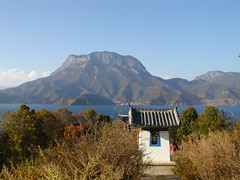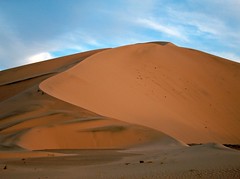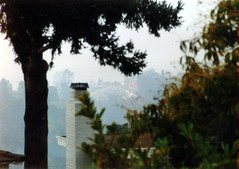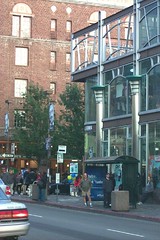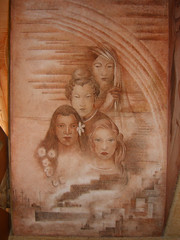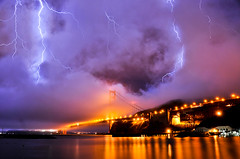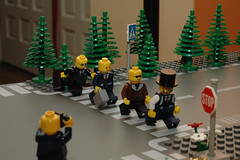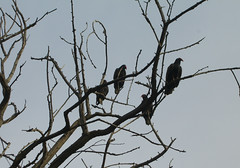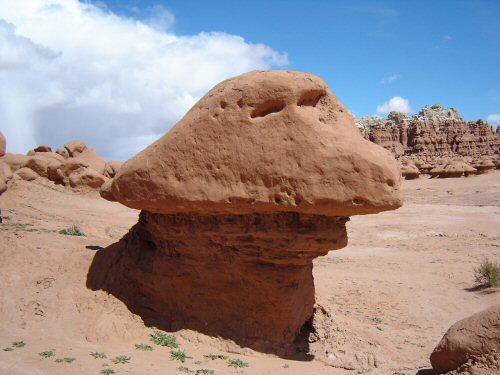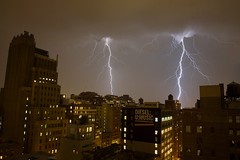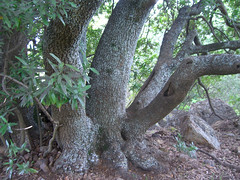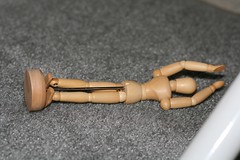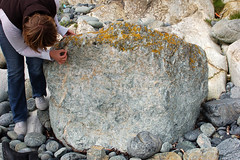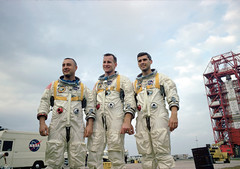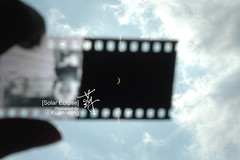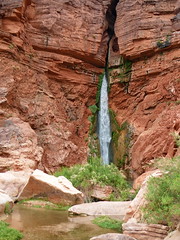Tuesday, December 22, 2009
Monday, December 21, 2009
early geography
When we got air conditioning in our car, and didn't have to drive down the valley at 2 am in the roasting summertime, I learned how far away we were from the bay area, as I was awake for the ride.
And Robert Louis Stephenson taught me to think about what was going on elsewhere, in terms of shared experience. Steady, cold rain like today's reminds me of his poem, "Rain." It's so simple:
It falls on field and tree,
It rains on the umbrellas here,
And on the ships at sea.
Oddly, re-reading that, I notice that I remembered it differently. Until now, I remembered, "It rains on houses in Japan/And on the ships at sea." I wonder why. Was I looking at pictures or reading books about Japan, then? About houses or umbrellas in Japan?
Hm.
This sort of thing, though, colored my geographic learning, and I think it's valuable in any child's learning, to have literature that isn't all about morals and lessons, but also about images, and places, and shared experience, and how things were different back then, and about how we're not the only people in the world, and our experience is not the only experience, and that there are things we will all share, and that there are things that we might never relate to.
Saturday, December 19, 2009
The Universe, and the Tibetan Plateau
I had no idea, for instance, how much completely unmapped space there is. Why is that? I can see it being hard to map past the center of the Milky Way, but couldn't tell in which directions we're yet unmapped, and why -- could be be that hard to map in the opposite direction from the center? Are the stars densely packed that direction, for far enough to make it opaque for us?
Of the whole video, though, my favorite part was tipping past the Himalaya to see the lakes of the Tibetan Plateau. I had no idea how lake-rich the area is. I knew that it was sparsely populated, that big quakes there can go almost unreported except by instruments, that there are thousands of square miles with no roads. But the lakes just caught my attention: Look at all this gorgeous water. What's it like there? Who lives there? What do they do?
It turns out google and flickr both had answers for me.
Wednesday, December 16, 2009
lunacy, really
Amazing, really, when you think about it.

Photo by JPStanley
via Creative Commons search
on Flickr.
Saturday, December 12, 2009
Mountain of Ghosts - Algeria - November 2005
"There's enough sand in the Sahara to cover most of North Africa." - Martin DeMello, December 2009
It's really amazing what you learn on the internet, these days.
Thursday, December 10, 2009
Geologists rock!
The video gets interesting at about 1:00ish.
I'm really not sure I wouldn't have flipped the hell out, watching this. Then I'd have asked Bateman to follow me around and be my body guard.
(via agweb, thanks to Silver Fox for the story, thanks to @caroldn for the new title)
Tuesday, December 01, 2009
Excerpts of the President's Address to the Nation, Dec. 1, 2009 in a tag cloud

Excerpts of the President's Address to the Nation, Dec. 1, 2009 in a tag cloud
Originally uploaded by allaboutgeorge.
Tuesday, November 24, 2009
The Anthropology Song
Saturday, November 21, 2009
What if Earth had rings like Saturn?
I don't want to interrupt the loveliness of this idea, but there are bits from the video and the comments that I want to note:
Someone commented that this might make places under the rings where it was permanently dark. But because the earth is tilted on its axis and the sun appears to move north and south through the sky seasonally, so would the shadow move. But it's likely some places (the equator, generally everywhere between the tropics) would get some level of shade from the rings. The layer is very thin; aside from under the rings at equinox, there would be plenty of bright sun. Would there be enough insolation change to affect climate? Probably. But given the scenario, I expect the earth would have evolved this way, it's not like it would be a change from how things are now.
The person who made the animation seems to have designed it for equinox. Seasonal variations aren't addressed at all.
The theoreticals (e.g. one commenter's note that this would affect satellites) are irrelevant to me: It's beautiful.
Saturday, November 14, 2009
Accra - A C C R A
When I was little, and couldn't sleep, Mom suggested I list every single state in the US, alphabetically. If I ever realized I'd missed one, I had to go back and start from the beginning. I don't think I made it to Wyoming.
I found myself, as I passed San Bruno Mountain today, where the endangered Mission Blue butterfly lives, "There are Mission Blues on San Bruno Mountain, but the California dogface butterfly is our state butterfly. Why do I know that? I don't know. I just do."
It's the sort of useless thing that helps me paint a picture of the world when people talk about it. It's a piece of the whole puzzle.
Thursday, November 12, 2009
Africa from Europe on Google Streetview

How cool is that? That is very cool.
We're fostering a tiny puppy, switching the garden over into fall mode, trying to get our house in order, and I'm finishing a semester at school. This is Geography Awareness Week, and I think there will be a post about that before the week is up.
Tuesday, October 20, 2009
sense of place - Oakland Hills Fire
But anyway: I'm thinking of it, eighteen years later.
Saturday, October 17, 2009
sense of place - Loma Prieta quake, twenty years ago
I was standing exactly where the guy with the shorts is standing at 5:04 pm on October 17, 1989.
Friday, October 16, 2009
Look! Up in the sky! It's a bird! It's a plane!
Pretty much everyone knows that I have a broad definition of "geography," right? Usually, if I can see it from earth, or if what happens there is directly relevant to earth, I'll often decide it counts. For awhile, I pondered having a day a week set aside for related sciences, but I've mostly given that up. If I post them here, I'll find a way to make them geography-relevant.
But this trailer is about an event that involves people on the ground looking at things relatively close to us, including within our atmosphere, so I think it's all about geography. Check it out. It's a lot of fun.
Wednesday, October 14, 2009
"oh AWESOME"
I love hearing grownups, especially teachers, say "OH AWESOME."
Tuesday, October 13, 2009
Why did Georgia flood so badly this year?
(About his first argument: Fall flooding like this was pretty much predicted by models.)
Monday, October 12, 2009
Feed the child
I learned to swim in creeks and lakes. I peeled endless acorns in my attempts to make acorn mush under trees while friends had tea parties in their bedrooms. I used my magnifying glass to set small piles of oak leaves on fire in my driveway, knowing better than to try that out in the woods.
When I was little, we were allowed to run around the woods (some of it has become a giant church complex, some is now protected as park) and nearby fields. I think I was 7 or 8, just old enough for my mother to append “bring your sister” to my requests to go play “in the fields,” as we called them. My sister wasn’t yet in kindergarten, and hauling her along was like dragging an anvil behind me as I ran off to the trails and creekside on the road to adventure.
Mom taught us how to avoid rattlesnakes and poison oak (we didn’t assume there were mountain lions around, but there had to be, we were right on the edge of town), and told us to be home before dusk, then sent us out to play. There was really nothing we were forbidden except to go into the rain culvert where Churn Creek went under Highway 44, in case of flash flood – so we did, of course, and would stand under the stormwater grates and listen to the roar of cars and trucks overhead, reveling in the danger. I didn’t climb trees, but the live oaks and black oaks often had multiple lanes of commuting black ants, and the gray pines were sticky with sap, and weren’t good climbing trees.
Instead, we collected sticks and branches and crunchy, prickly fallen leaves and wove forts not much bigger than our bodies. After intense summer thunderstorms, we’d go out to where the boys on their bikes had worn ruts over the dead grass and hard dirt near the creek, and slide down the mud-slick ramps on our bottoms. We had church clothing, school clothing, play clothing, and “mud clothing,” the bottom of the barrel, as Shasta County’s iron-rich soils leave permanent red tint on any clothing that touches it when it’s wet.
We picked wildflowers in the spring, and on the first of May, we made paper baskets, then filled them with brodaeia and shooting stars and lupine and wilting poppies and hung them on neighbors’ doorknobs, ringing the bell, then running away. We knew the names of most of the flowers – Mom called everything by name -- but she called all the brodaeia species “blue dick,” and called all the hummingbirds “ruby-throated” because in our basic birding guide, that was the only hummingbird with a red throat. (Anna’s weren’t in the book, and weren’t part of Mom’s Modoc County childhood, as they’ve only gradually moved north with human population.) Turkey vultures were “buzzards.” Everything had a name, though they weren’t always accurate names. We called gray pines “digger pines,” as that was their name then. We knew they were named after the foothill native people who were called “Digger Indians,” but even though my grandmother was an advocate for and sympathetic friend of the Pit River and Maidu people, it never occurred to any of us that “digger” was a racist euphemism.
One of my iconic memories that defines what gave root to my adult curiosity came on a late spring day, on one of the several trips to Burney Falls and Mount Lassen that we took every year. Redding was much smaller, then, and roads in the surrounding hills were often quiet. We were somewhere up near Kings Creek or Hat Creek, and there were turkey vultures rising on the morning thermals. They seemed to be doing their morning cruise more than looking for food, so Mom pulled over. “Get out of the car,” she told one of my older sisters. “Lie down in the middle of the road.”
Terry’s mouth fell open, and she shrieked, “WHAT?”
“Just lie down.”
“I’ll get run over!”
“I’m watching, I’ll tell you whether a car is coming.”
These days, ornithologists know that turkey vultures hunt by smell, not sight, but in the sixties, most people hadn’t learned that. My sister lay in the middle of the road for awhile – a minute, or five minutes, I was young – then leaped up to brush her clothes off and yell at Mom for risking her vulnerable child’s life.
The vulture hadn’t landed, no traffic had come by.
Had a vulture landed, would Mom have allowed it to pick out Terry’s eyes? Would she have scared it off? I might never know. Mom was that kind of woman.
This is the story that I most vividly remember, about Mom’s fascination with nature, and how she fed it to her children, but it’s one of many. Her willingness to live in nature, not as a spectator, but as an active participant, flowed onto and into me along with her milk and her singing when she was happy, and later her taste for ginger and marzipan.
Wednesday, October 07, 2009
In Science We Trust?
Tuesday, October 06, 2009
They really don't make flags like they used to

I want to learn more of the kinds of world history I missed in middle and high school, either because it just wasn't taught (where do kids learn about the Benin Empire in high school history?) or because in all my moving around (five high schools, really and truly) in my youth, I missed out on some curriculum.
This is the sort of thing I've missed.
(Thanks to Boing Boing for the pointer
Saturday, October 03, 2009
Nothing's where you think it is
"What do maps have to do with social equality, you ask?"
The good doctor (don't let me say "phlox" here) has a point. Size on a map matters, kids grow up seeing disproportionate sizes, and perhaps, attributing disproportionate values, even unconsciously. I think that as they learn mapping, learning about different projections, and the reasons for them, will continue to be important.
When I lived in Australia, I had a "corrective map of the world."
How much do these things matter? Why?
And I did crack up at the video clip. A lot.
Thursday, October 01, 2009
Wednesday, September 30, 2009
The Spirit Bears
The subsequent parts of this documentary are at http://www.youtube.com/user/neofelisman
There's more to this than Sloth Bears, of course. There are vultures, leopards, deer, buffalo, the aboriginal Vedda people, hornbills,
Monday, September 28, 2009
Scientific literacy for girls - it's like seeding the future
I'm saddened when I listen to teenagers, or even adults, or read what they've written online, and it smacks of scientific illiteracy, or even scientific ambivalence.
A couple of years ago, I took a college-level class in which we studied, among other things, the effect of the full moon on behavior. Study after study we examined showed that even when, for example, emergency room staff or police officers say people behave more wildly during a full moon, statistics -- based on arrests, ER visits, psych ward incidents, and other apparent behavior measures -- show that there really is no causal relationship between behavior and the phase of the moon. (In the few small studies that show some minor correlation, it can be explained elsehow, e.g. the full moon only increased wild behavior when the weather was also warm and folks were hanging out on the street more.) But after this investigation, students still insisted that no matter what science suggested, they knew that the full moon affects behavior because their nieces and nephews threw more tantrums, or they saw more chaos on the job, or whatever. Science was irrelevant. They didn't seem to get how it worked.
The kids in this program are excited about science. The topic at hand is astronomy, but they're not all interested in that, specifically. Some want to be doctors, one says she wants to be a marine biologist. Some might even end up being teachers, or stay-at-home parents, or captain ferries that cross the bay. But they're learning, they're excited about learning, and they're excited about science. This is priceless. These are the kids we need growing up into our future, and making it go.
I'm not sure why I cried when I read this. Maybe it's because these are kids mostly from Oakland, and mostly African-American, and the high school dropout rate in Oakland's phenomenal, especially within the African-American community. Maybe it's because a female, African-American astronomer is part of their worldview now. Maybe it's because these are girls, and the adults working with them seem so much to care that they grow up with positive, science-related educational experiences. Maybe it's because these are kids and need a positive science background, and many public schools can be a hard place to get that these days, and the Girl Scouts and Chabot Space and Science Center and the other people and organizations behind this program are offering it to them.
These are kids who will grow up as better critical thinkers, with experience reading about science and learning how it applies in "real life." Their own experiences and perceptions won't, as much, form the bases for their realities. Their understanding of what is possible out there, both in science in general, in the universe, and in their own lives, are forever expanded.
Now it's your turn to ride across North America
Sunday, September 27, 2009
Thursday, September 24, 2009
Wednesday, September 23, 2009
smooth cruising
A year later, most of these buildings would be shaken or burned down, or both.
The Ferry Building is still there. What else can you see?
Please note that the interplay of pedestrians, bicycles, automobiles, and public transit was only a little less chaotic then than it is now.
Tuesday, September 22, 2009
Spring came in like a big red lion
But that's not all. Sydney is hundreds of kilometers to the east, and is getting whacked with it too, as is Queensland farther north. This is pretty much kicking ass in the western third and northern two thirds of the whole huge country.
It brings to mind images I've seen of the storms heralding North America's dust bowl of the Great Depression in the 1930s.

Reuters covers some of the reasons for the dust storm. A friend of mine was reporting rain where I used to live, in Australia, with some of the creeks flowing across roads. (This is normal, it's rural, and the bridges are concreted smooth spots across the creeks.) The front that caused those storms stirred up the dust:
During winter in Australia low pressure storms are generated in the Indian and Southern Oceans, whipping up huge seas and creating severe cold fronts which sweep across southern and eastern Australia.This caused a thunderstorm with winds of 100+km/hr in South Australia. Those winds lifted the dust from dessicated outback and marginal lands. Just as happened in the thirties in North America (and Australia too, for that matter), the soil was loosened and blew east into Queensland and New South Wales.
And addressing the question of whether climate change caused the dust storm:
....dust storms are usually restricted to the inland of Australia. Occasionally, during widespread drought they can affect coastal areas. Australia is battling one of its worst droughts and weather officials say an El Nino is slowly developing in the Pacific which will mean drier conditions for Australia's eastern states.
We also, for what it's worth, can't say whether climate change caused Hurricane Katrina. (Al Gore was wrong to imply that it did, and it affected his credibility for me, when I saw An Inconvenient Truth.) We can only look at patterns, not isolated events. But we do know that this dust storm was caused by changes in Australia that have come about as a part of a pattern of change in their part of the world. Did climate change cause the dust storm? No way to say. Did climate change cause the conditions that led to it? So far, probably. We shall see.
Dramatic pics in this story
Quite a lot of pictures here
My friend David Morgan-Mar has a dramatic set of photos, and his reaction, here.
@paddyplasterer pointed me at a live stream of photos posted on twitter.
Slipping past another marker on the orbital calendar
Points along the path as the earth turns aren't part of a religion for me. I notice the Pagan and Christian, and sometimes other markers for stops along the seasonal paths, but I don't notice them in terms of gods or goddesses or the supernatural.

They keep my eyes and ears open.
They tie me to the earth, and that's important for me. Keeping my awareness on the planet (and the universe) that, probably without even knowing it, keeps conditions so that I can live the life I live now, helps me remember that one of my responsibilities is to care for it. One reason I like geography is that it's about something, some place, I love -- and if we love something, why wouldn't we want to learn more about it and take care of it?
Not only does the Time and Date link have a great explanation of how and why the equinox is what it is, it's full of more awesome links to information and fun.
Today, I'm heading out into the garden to separate the green-bin pruning from the compost-pile pruning, to pull down the remains of the corn, harvest some potatoes, sort out some pole-bean seeds for saving (and feed the rest to the chickens), and start preparing the planting beds for fall's parsnips, spinach, lettuce, carrots, and sugar snap peas.
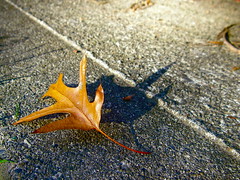
Photos thanks to Wolfgang Staudt and kganes via Flickr's creative commons search.
I figure the bad guys can take care of themselves.
Sunday, September 20, 2009
sense of place - Beach Chalet
Before my sister died, this was on the list of places she wanted to go again. I'd never been, had no idea it was there despite years of hanging out (and a few months of living in) San Francisco. Now, it has emotional value for its art, as well as having been the last place I had a coherent conversation with my sister. (Brain cancer sucks.)
(Clicking through to the flickr page will give you more info, and lots of links.)
Wednesday, September 16, 2009
Earth's physical forms
Sunday, September 13, 2009
Good Morning!
GoodMorning! Full Render #2 from blprnt on Vimeo.
The maker explains at http://blog.blprnt.com/ -
GoodMorning! is a Twitter visualization tool that shows about 11,000 ‘good morning’ tweets over a 24 hour period, rendering a simple sample of Twitter activity around the globe. The tweets are colour-coded: green blocks are early tweets, orange ones are around 9am, and red tweets are later in the morning. Black blocks are ‘out of time’ tweets which said good morning (or a non-english equivalent) at a strange time in the day.
Much more info is at the post, with related images and explanation.
I awoke last night to the sound of thunder...
It's still raining, but not lightninging. It feels unsettled, like seasons are changing a bit earlier this year. I hope this portends a proper wet El Niño effect this coming winter.
I wasn't expecting an earth-shattering kaboom
In 1996, for some reason, the shuttle flew over Sacramento on its way to Edwards.
It went over at the very crack of dawn, so I went outside a bit before that, wrapped in a blanket, and lay back on the sidewalk to wait.
Soon, in the dark east, a hot pink triangle materialized, and slid quickly overhead. I think it was pink from the heat. It was close enough to see that it was clearly a triangle, and clearly the shuttle, but I could see no details.
It moved silently over me, then disappeared into the equally pink sunrise to the east.
I wandered back into my apartment, curled up in bed, then as I was drifting off, the BOOM that you experienced rattled my window glass. I jumped out of my skin, and then burst into laughter.
It was honest joy.
I am a total shuttle-hugger, and that morning made among my most memorable space-related events.

Saturday, September 12, 2009
Abbey Road from low earth orbit
Abbey Road
Zebra crossings were cutting edge, back then. Now everyone has them.
That's a busy intersection. Wow.
Dry Lightning...
Huge thunderstorms aren't that common here, and this one wasn't huge, but like too many of ours in the summer, was relatively dry, bringing no relief for the drought, but serious fire danger in our parched mountains.
It the same time, it's amazing and nifty. At our house, most of the thunder was about twenty-blue-tomcats away, and I wasn't one bit concerned. Our noise-phobic dog slept through them.
Avram Cheaney got a fabulous recording of the thunder, and that's what sent me geographile-ward to make this post. Go listen:
THUNDER! (Oh. And car alarms.)
Cory Dalva got a great picture that's too copyrighted to embed.
Saturday, September 05, 2009
International Vulture Awareness Day
Of course, the vulture never landed. What we didn't know then, but know now, is that the Turkey Vulture is one of the few birds with a keen sense of smell. They choose their carrion from the scents that waft up to them on warm air. It needs to be a few hours old, but can't really be rotting.
Researchers have put roadkill deer deep into bushes, not far from carefully cleaned and taxidermied deer that look dead, in a clearing, and the vultures have gone after the nice meaty stinky deer. There are stories of Black Vultures following Turkey Vultures to find better dinners.
North America's vultures – the common Turkey Vulture and Black Vulture, and the critically endangered California Condor – are very different animals from old world vultures, but share the same niche. They are more closely related to storks than they are to the old world vultures, and are not raptors, as they don't catch live prey with their feet. But all vultures and condors have mostly bald heads, and eat carrion. A bit more than a decade ago, the nascent Animal Planet had a show called “All Bird TV," and on it, host/ornithologist Ken Dial, a bald guy, illustrated the need for bald carrion eaters by putting a wig on and plunging his head into a huge pot of saucy spaghetti. It stuck all over the wig. Then he removed the wig and stuck his bald head in the pot. What spaghetti managed to stick at all was easily shaken and wiped off.
The California Condor is still at risk from myriad human causes. They bump their huge wings on high voltage lines, they consume lead bullets in carrion, they're occasionally shot at. They don't seem to mix well with modern human society, and there are only about 200 California Condors left.
Old world vultures are also threatened by loss of habitat and environmental toxins. King Vultures in India are dying from exposure to diclofenac, a common anti-inflammatory in cows there. When the cows die, and the vultures eat their meat, the vultures are poisoned. It's even affected the Indian Zoroastrians' tradition of sky burial, with too few vultures to do the job. (And careful with that link – there are some slightly gooshy photos behind it. But the King Vultures are fine with gooshiness.)
I feel lucky to have Turkey Vultures as yard birds. Those in the photo illustrating this post were in my yard at the time, and they often fly overhead. But few vulture species are as common, and few have as secure a future as the roadkill-loving Turkey Vulture. The rest really need our help, which starts with awareness. After that comes working to promote (or require) bismuth bullets for hunting in condor ranges, research into (and banning of?) chemicals that poison vultures, designing human infrastructure and planning development in ways that allow the birds their space as well. But it starts with awareness of their beauty, the jobs they do, and why we need to help them.
Vultures are awesome.

Here are more links and stories about Vulture Awareness Day:
International Vulture Awareness Day home page
Picus blog
Ecoworldly
Vulture Awareness Day at the Virginia Aquarium & Marine Science Center
In Haaretz
Vultures I Would Like To See
Reflection from Pinguinus
At Coyote Crossing
Carnival of vulture blogs
Friday, September 04, 2009
Thursday, September 03, 2009
It's play time....
Monopoly City Streets is having a worldwide, everyone's-in Monopoly game using Google Maps as the game board.
There's not much news about it now, just the blog. Will it be worlds of fun, or will the boringness (okay, so I really get bored playing Monopoly) scale up with the size of the game board?
Tuesday, September 01, 2009
The Station Fire from around the web
You know what's a scary thought? This fire grew and spread fast without the offshore Santa Ana winds that can pop up and push fires around at this time of year. I don't want to imagine what this fire might be like with the Santa Anas working their magic.
The Station Fire - this time with armageddon
After the Oakland Hills fire, officials sprayed the steepest hillsides with goo to glue the dirt together, mixed with wildflowers seeds - and the next few springs were stupendous. I'm not sure there's enough glue in the world for the San Gabriels, one of the fastest-rising and most fragile mountain ranges in the world -- but I hope they try something like that.
Thanks to Ian O'Neill for the pointer.
Who ya gonna call?
We definitely get lightning, and parts of the state get intense lightning.
When I was little, in Shasta County, the grid wasn't as robust as it is now. We'd get days where the temperature would be 100, then 105, then 110, and sticky humid, unlike what we're used to in parts of California that aren't the northwestern corner. Then kaboom, the angels would start bowling, as Mom described it, and we'd have a huge storm, and the rain would pour. The power would go out, and we'd eat hot dogs cooked on unbent metal hangars in the fireplace, and pop popcorn in my mom's old campfire popping basket, and toast marshmallows, and sing. We were a girlscouty sort of family like that. Then we'd go to bed, and at some point the next morning, the power would come back on, usually just in time to power our tiny air conditioning unit in the living room so that as the temperatures rose back up into the 90s, we could lie in front of it and read. If the gutters were still running, we'd go block off the storm drain with detritus and walk around in our boots or pretend to fish.
There are other parts of the state that get lightning storms. But for the most part, we don't get big thunderboomers in California, the storms slide on overhead and aren't terribly dramatic.
We worry a bit when they come over, sometimes, as our summers tend to be dry, and a dry lightning storm can be troublesome. But lightning doesn't terrify me the way it can people in, say, Florida, where death by lightning is generally understood as one of the ways to go.
Monday, August 31, 2009
Rambles through our country
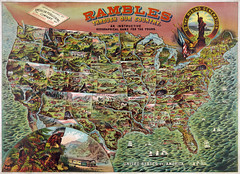
Rambles through our country, an instructive geographical game for the young, 1890
Originally uploaded by trialsanderrors.
(The caption says:
From the Popular Graphic Arts Collection at the U.S. Library of Congress....This picture is in the public domain.)
edited to add at 10:26 pm:
Linda says that you can find the maps on ebay, and that the rules are on google books! Yay!
Saturday, August 29, 2009
Station Fire - August 29/30
Time Lapse Test: Station Fire from Eric Spiegelman on Vimeo.
It's late and I'm sleepy, having paid too much attention to it today because a dear friend lives a couple of blocks outside of a mandatory evacuation zone. Things seem to be going reasonably well for her, in terms of how well the firefighters are protecting her little corner, but it's nerve-wracking.
The Briggs Terrace neighborhood is in worse shape -- okay for now, but transitions between night and day do weird things to weather and air circulation, and thus fire behavior.
Of course there are other fires burning in California. It's summer, after all.
That's the one capturing my attention right now.
Tuesday, August 25, 2009
We want you as a geography recruit!
YouTube, though, has disabled the audio for copyright reasons, so you might want to pull out your Village People cassette and put it on in the background while you watch.
Monday, August 24, 2009
You might be a geonerd if ....
Hurricane Bound For Texas Slowed By Large Land Mass To The South
Sunday, August 23, 2009
Yosemite is still one of my favorite places (and a foreign exchange student question)
Time Lapse Round One from Sean Stiegemeier on Vimeo.
Thanks to Backyard Zen for the heads-up.
Starting next week, I'll be taking an environmental writing course. I hope to edit some of my work there for this blog.
Also: Have any of you been foreign exchange students, and would be willing to talk to me about it for a post on this blog? Please let me know, if so, and pass this post and request on to anyone you know who might be interested.
Thanks. :D
Saturday, August 22, 2009
ah, for the wide open skies
Next spring, I think, I want to go up to Northern California -- the northeastern corner, Modoc County, and camp for a few days, and watch the Milky Way move like this:
Thursday, August 20, 2009
sense of place - bay laurel
Later, when my mother was engaged to a man with a huge ranch in Tehama County, we'd go out with him and help flake the hay for the cows (picture two kids, 11 and 7, riding on the top of a big pile of hay on a pickup truck, cutting the bale wire and flicking flakes of alfalfa off the back of the truck onto the hills in a meandering line, as the truck was slowly driven, cows lining up behind the truck, the kids working their way down, down through the stack of hay, until the truck was empty, it was a big job but it was just a basic kid chore) then he'd drop us into a little gully to play as he ran around and fixed fences and did rancher things. We'd get up under the oak trees and build fairy lands in the undertree litter, or play hide and seek, or make forts, or even read. We learned young how to avoid rattlers and poison oak and even mountain lions (uncommon, but not at all unknown), and we stopped thinking about them, they left our daily consciousness. I think Mom thought of them as one risk of a natural childhood. If one of us had gotten badly injured, we'd have been well away from help until the truck came back a couple of hours later, we were at least three miles from the nearest house. But we didn't think about that, and we were happy, and well exercised, and strong.
As an adult, I still seek out the nooks, the undertree forts, the thick, strong trees, the places that feel safe.
Sunday, August 16, 2009
Geography as a fascinating and relevant subject
The youtube account holder is "geogfilms," so I expect enthusiasm and lack of objectivity. ;)
Thursday, August 13, 2009
shakin' all over
A basic step, if you live in an area that could possibly have a big quake, is to keep a stash of supplies -- food, water, safety gear, extra sturdy clothing -- where you'll be able to get to it easily afterwards. I refer to the comprehensive quake-kit list at sfgate.com when I need a reminder of what to include.
My area is decidedly red. We live near a fault that's overdue for a big quake. I lived through the Loma Prieta (from 60 miles away -- it was scary where I was, and damaging, but not devastating) and spent a long time nervous about earthquakes, afraid. I still have some nervous responses, but mostly I'm better, and I'm working on being more prepared.
At our house, we have camping equipment stored in the garage, and we specifically keep it right near the garage door, near the floor, where we can grab it if we have to. Even if that building were to collapse, we could find the camping equipment. And we're pretty sure we can stay in our yard, there aren't any hazards and it's not likely to liquefy. We also have a pen for the dogs, just in case, and extra leashes.
We need to work on storing that in a more organized way.
We keep important papers hidden in a fire-proof safe that we can access easily after a quake. I'm not worried about things like jewelry -- I don't have much, and even for the emotionally important stuff, ultimately it's just stuff. We want to keep ourselves safe and hydrated, and we want to keep the dogs safe, hydrated, and as calm as possible. Everything else is extra.
There are some things I don't do nearly often enough, and I don't have ready. For instance, I don't have a flashlight in my bedroom where I can grab it easily, or sturdy shoes always right near the bed. Both of those are easy enough to fix. I'm pondering getting a cheapo kid's backpack at a thrift store and making a small, basic pack for next to my bed, and one for the car. (It's a station wagon, impossible truly to hide anything of any size in there. I don't want to be a break-in target.)
Is there anything else? I'm sure I'm forgetting things specific to me (e.g. make sure I have three or four days of medication in my quake kits), and there might be something specific to you that's not on any list, that you should remember. Extra glasses if you're used to contacts and can't see at all without help? Disposable diapers and wipes?) What would you want to have in a kit that's not on standard readiness lists?
Wednesday, August 12, 2009
white-hot meteors
The fog came in for us, and we saw none. This is the San Francisco Bay Area, where fog on summer nights keeps us cooler in the daytime, but makes star watching a real pain sometimes.
This little video makes me want to go somewhere more remote and clear, next August, and set up the camera with the 16 gb card in it, then drink hot cocoa and watch the skies.
Monday, August 10, 2009
Poor Japan
But as hard as the shaking looks, it was only 6.4, and there was no major damage (reported as of now, a few hours later, anyhow), and the tsunami was small.
Mind you, within twelve minutes away from this quake, a 7.6 whopper, probably an aftershock of the 2004 quake, shook the Bay of Bengal between the Andaman Islands and Burma. Tsunami-watchers waited nervously, but none materialized. The quake was more than 30 km deep, fortunately.
Sunday, August 09, 2009
Sierra Nevada watershed
It illustrates with LEDs the storage of fresh water in snow and ice in the Sierra Nevada, and its flow down the slopes, through the valley, and out to sea through the Delta and San Francisco Bay.
If climate change warms up and dries out California in the summer, as models currently predict, less water will be stored as snow over the winter, leaving less fresh water to flow out to sea and through the Delta in the summer. Not only will this mean less fresh water for immediate human use, but less for agriculture, wildlife, and fresh/salt balance in the Delta.
traditional map skills
Here are some traditional uses for maps that you might have forgotten about.
Saturday, August 08, 2009
To the edge of space
This would have been a life-changing experience for me, too -- the black above, the curve of the earth below, all one planet.
On my first airplane trip, a 24-hour flight to Australia, back when it took that long and required one or two refueling stops, I awoke at one point to sunrise over the Pacific Ocean. The colors broke into a spectrum, a horizontal rainbow on the horizon between some towering clouds in the distance, and I nearly cried.
This was something my great-grandmother could never have had.
I wonder what the children coming after us will see.
Saturday, August 01, 2009
The more you know
"Are humans causing the climate to change/warm because of greenhouse gases and other anthropogenic activities?"
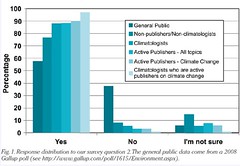
That's from @danwhnt, one of my favorite Twitter geonerds. (And it's much easier to read if you click through to the big one.)
I'm curious if so many non-experts believe climate change isn't largely anthropogenic because various media sources think they have to be balanced, and provide the viewpoint of one denier for every scientist who explains why humans provide a huge chunk of the fuel to drive climate change.
playing Ohio
In this flash application, Ohio's counties are given piano notes (which you can vary according to geographic data) and you can play songs, freeway routes, or other demographic data laid on top of that.
Ohio as a piano
In the two songs provided, I think the music might have been poorly transcribed, but there's only so much flash can do, right?
Friday, July 31, 2009
finding like minds
Anyone proudly using that one (or spreading geonerd jokes, and "you know you're a geonerd when....") is someone I'll probably enjoy getting to know.
Natural wonders
The youtube page says, "investigates unique deserts, coral reefs, waterfalls and other atypical natural phenomena." How are these atypical? I don't quite get it. Do they mean "special"? At any rate, these are neat, within a basic educational film.
oh the places you'll go
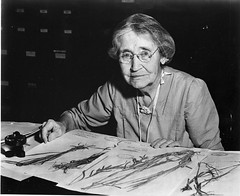
Mary Agnes Chase (1869-1963),
sitting at desk with specimens
Originally uploaded by Smithsonian Institution.
I'd gotten frustrated at my local community college for running out of classes I need to take, and want to take, this year. You see, I (*sigh*) procrastinated finishing my application for the local Cal State university geography program long enough that the state budget crisis interfered, and the university system decided not to admit any more applicants this school year for winter and spring quarters. This means I can't take classes, unless I'm willing to pay a lot for Open University classes (and there's room in them, unlikely given that cuts also reduced the total number of classes), until next fall.
So I'm trying to fill my year with classes that I don't need (as there are no more lower division classes that I need, period, ever) but that will be fascinating and most important, useful, both in my classes once I do get to the university, and in my career after that.
The community college where I'd been finishing geography (required) and astronomy (fun!) classes had run out of things for me. So I poked around.
And wow - it turns out another local community college has so many classes I could get a second AA (hush, I won't ... or will I?) before going on.
Check this out, classwise:
Environmental writing (I'm not sure if this is a study of environmental literature or learning how to write about it, and I don't care! Whee!)
Early childhood environmental education
Intro to creek watershed restoration
American Indian history and culture
Civilization's impact on the environment: psychology of trashing the earth
Environmental racism and justice
Natural History field classes (a few courses: local herpetology, local ornithology, Monterey Bay, Devil's Postpile)
Habitat Restoration Gardening
Wildlife and watershed
Contemporary Native Americans in the bay area
Permaculture design
I'm just blissed out, here. And that doesn't even count GIS and Spanish.
I can't take them all, but there are enough that I can fill my year with fun.
Wednesday, July 29, 2009
Remembering Apollo 1
On January 27, 1967, Apollo 1's crew--Virgil I. "Gus" Grissom, Edward H. White II and Roger B. Chaffee--was killed when a fire erupted in their capsule during testing. Apollo 1 was originally designated AS-204 but following the fire, the astronauts' widows requested that the mission be remembered as Apollo 1 and following missions would be numbered subsequent to the flight that never made it into space.
Wow.
That's lovely.
Saturday, July 25, 2009
Friday, July 24, 2009
obsessive geography brain

I was poking through Grant Imahara's stuff on Twitpic, and found this bridge photo. It's a "from the set" photo, so I assume it's in California, though it might not be. It has California native palms, though Washingtonia palms are used in landscaping so they're everywhere now. It's recent, so it's not the new Zampa bridge being built at Carquinez Strait, right? And it doesn't look like Carquinez Strait anyhow. Where are other steel truss bridges that high in California? What's going on behind it, are they working on a new bridge?
I'm going to poke around online until I find it or can't justify not getting up to plan for a trip we're headed out on soon. (I'll take pics, I could just turn Geographile into a vacation pictures journal. Wouldn't that be fun. :) )
In the meantime, if you know where this picture was taken, please let me know. This isn't a Mythbusters fan thing, it's a MUST KNOW GEOGRAPHY thing. It's an obsession. Clicking through on the picture will make it bigger for you.
(edited to add: Old span of Bay Bridge with new one under construction behind it. I see this a few times a week. But the scale seemed all wrong to me, this seemed much too small for it. Also, I didn't recognize the foreground, which is probably in Alameda or along the Oakland waterfront. Thanks to Paul and Bill for nudges.)
Edited again, July 24: DUH! Casey pointed out that I could have the direction completely wrong, and I did. Google maps confirms it's along Avenue N in the northeast corner of Treasure Island, in the middle of San Francisco Bay.
Wednesday, July 22, 2009
(maybe not) just one more
July 22th, 2009
Solar Eclipse
Taipei
Tuesday, July 21, 2009
Bring on the quakes

Click through to see the full size.
Yes, it's a lovely picture of totality, but so many of those show just the moon and corona and maybe a diamond ring.
But for this, having the boats in the foreground, and the clouds, and the slight texture of the water, make it truly amazing to me. This would be a fabulous print... at least, for nerds like me.
日蝕 Eclipse
So far, so good on the megadisaster. I found more than a few things on the web warning folks to stay off the beaches in India because of the potential for a massive quake in Japan that would somehow cause tsunamis in India.
There are total eclipses on this planet with relative regularity, and earthquakes every day, including a few large earthquakes every year.
My fingers are crossed that Asia won't coincidentally have a big quake in the next few hours, or we'll never hear the end of it from people who think the eclipse caused it.
On first seeing the Colorado River Basin
The upper two-thirds of the basin rises from four to eight thousand feet above the level of the sea. This high region, on the east, north, and west, is set with ranges of snow-clad mountains, attaining an altitude above the sea varying from eight to fourteen thousand feet. All winter long, on its monutain-crested rim, snow falls, filling the gorges, half burying the forests, and covering the crags and peaks with a mantle woven by the winds from the waves of the sea -- a mantle of snow. When the summer-sun comes, this snow melts, and tumbles down the mountain-sides in millions of cascades. Ten million cascade brooks unite to form ten thousand torrent creeks; ten thousand torrent creeks united to form a hundred rivers beset with cataracts; a hundred roaring rivers unite to form the Colorado, which rolls, a mad, turbid stream, into the Gulf of California
My battered copy of this book, which I bought for 25 cents from a box in front of a small used-bookstore, is one of the geographilic books I can just lie around and read bits of, over and over again.
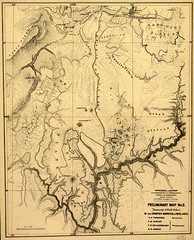
John Wesley Powell
 , with one arm, with food supplies that got wet and moldy over the weeks, with boats and crew gradually wearing out and falling apart, or leaving the party, made it, more than once, from one end of the Colorado to the other, and wrote richly about what he saw there.
, with one arm, with food supplies that got wet and moldy over the weeks, with boats and crew gradually wearing out and falling apart, or leaving the party, made it, more than once, from one end of the Colorado to the other, and wrote richly about what he saw there.





Of course, then we submerged many of his cataracts and fern-lined canyons with the reservoir that bears his name.


